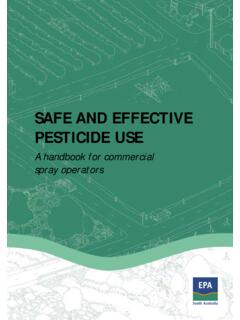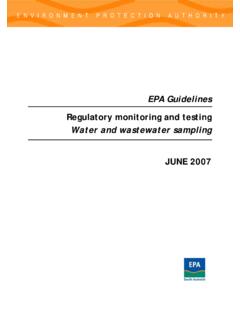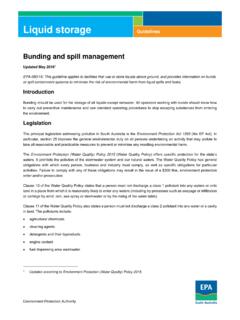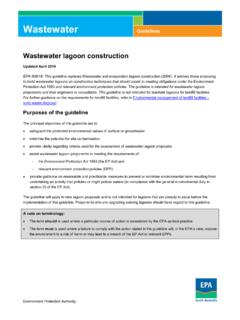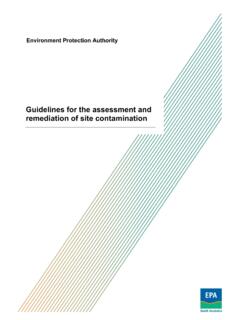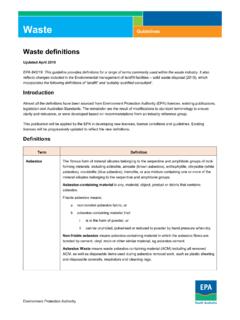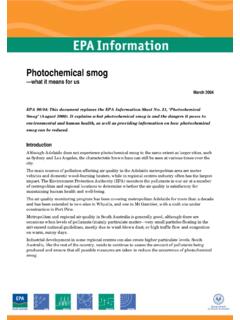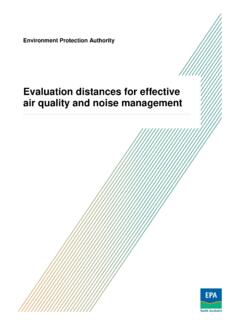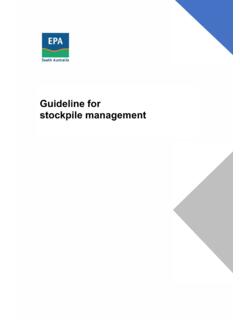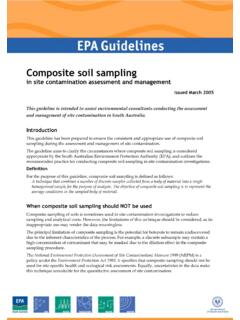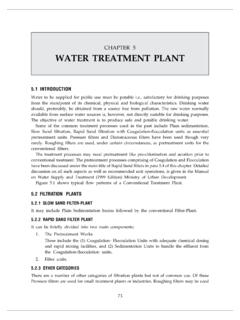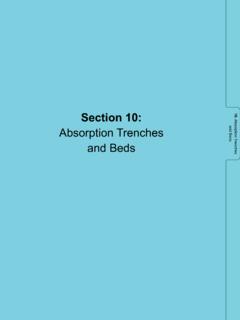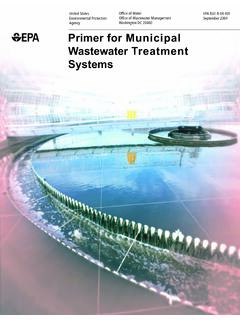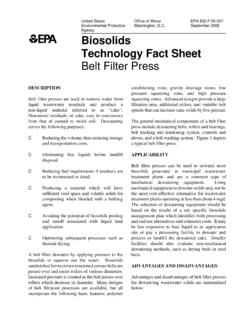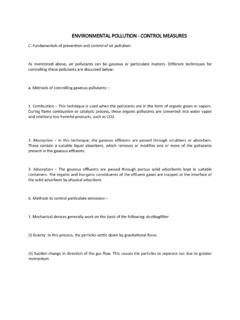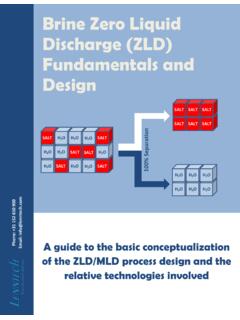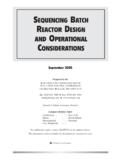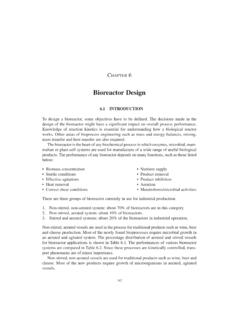Transcription of Disposal of Swimming Pool Backwash Water
1 Disposal of Swimming Pool Backwash Water Issued April 2004 EPA 181/04: This document replaces the EPA Information Sheet No. 13 Disposal of Backwash Water from Swimming Pools issued in September 1999. It provides information on your obligation to ensure Backwash Water does not enter our natural waterways. Introduction Swimming pool Water contains a range of treatment products such as chlorine, salt and acid, and filtration media (sand, diatomaceous earth). In addition, the Water contains dirt particles (sediments), wind-blown materials such as leaves and lawn cuttings, as well as body oils, sunscreen residues and potentially harmful bacteria. In the normal operation of Swimming pools, these materials are collected by the filtration system and captured or contained in the filter. To work efficiently, Swimming pool filters need to be cleaned by backwashing all the captured materials out of the filter. South Australian legislation prohibits the Disposal of Backwash Water from Swimming pools into the stormwater system as it can harm our creeks, rivers, lakes and coastal waters.
2 Your obligations The principal legislation addressing pollution in South Australia is the Environment Protection Act 1993 (the Act). In particular, section 25 imposes the general environmental duty on all persons undertaking an activity that may pollute, to take all reasonable and practicable measures to prevent or minimise any resulting environmental harm. The Environment Protection ( Water Quality) Policy 2003 ( Water Quality Policy) offers the most specific protection for the state s waters. The Water Quality Policy prohibits the pollution of the stormwater system and our natural waters. It has general obligations with which every person, business and industry must comply, as well as specific obligations for particular activities. Failure to comply with any of these obligations may result in a $300 fine, Environment Protection Order, and/or prosecution. Clause 17 (1) of the Water Quality Policy states that a person must not discharge or deposit a pollutant listed in Part 1 of Schedule 4 of the Policy into any waters or onto land where it might enter any waters.
3 The pollutants listed in Schedule 4 Part 1 include: pool Backwash Water pool chemicals. You are also obliged under the Public and Environmental Health Act 1987 (Section 18) not to discharge waste in a public place. More specifically, under the Code of Practice for Swimming Pools, developed by the South Australian Health Commission, you must dispose of filter Backwash Water in a way that does not create an offensive situation or nuisance and that is not injurious to health. Disposal of Backwash Water In areas connected to the sewerage system, Backwash Water from all Swimming pools can be directed to a sewerage drainage point. New Swimming pools should be permanently connected to the sewer at the time of installation or construction, and with approval from SA Water telephone 1300 650 950. In areas served by a septic tank effluent Disposal scheme (STEDS), approval must be granted by the local council operating the STEDS before a permanent connection can be installed. Any Backwash Water is to bypass the septic tank and be discharged to the drain between the septic tank and the common effluent drain.
4 Under no circumstances should Backwash Water be discharged into the septic tank. In unsewered regions, Backwash Water is to be discharged to a grassed, vegetated or garden area, or a stone-filled trench either open to the surface or underground (similar to a septic tank absorption field). Any surface run-off resulting from the discharge should be contained within the property boundaries. Reuse Backwash Water can be discharged to the garden or lawn as a source of irrigation. Salt chlorinated pool Water will require salt tolerant plant species, and it is advisable to occasionally Water the area with clean, good quality Water . (See attached plant list for salt-tolerant species.) Glossary Septic tank system includes all sanitary plumbing fixtures, traps, waste pipes, vents, inspection openings, drains, septic tank and/or other treatment units and methods of effluent Disposal . Septic tank effluent Disposal scheme (STEDS) a communal drainage system for the carriage of septic tank effluent and sullage Water , owned and maintained by the local council.
5 Swimming pool refers to all private, commercial and public Swimming pools, spas, bathing pools, Water slides and therapy pools. Diatomaceous earth a fine siliceous earth used in filtration. 2 References SA Water , Industrial Waste Section, Swimming Pool Policy South Australian Health Commission, Code of Practice for Swimming Pools Wayne A Brown, Rural Solutions SA, Salt Tolerant Plant Species List. FURTHER INFORMATION Legislation Legislation may be viewed on the Internet at: Copies of legislation are available for purchase from: Government Information Centre Telephone: 13 23 24 Lands Titles Office, 101 Grenfell Street Internet: Adelaide SA 5000 For general information please contact: Environment Protection Authority Telephone: (08) 8204 2004 GPO Box 2607 Facsimile: (08) 8204 9393 Adelaide SA 5001 Freecall (country): 1800 623 445 E-mail: Internet: 3 Salt tolerant plant species Botanical Name Common Name Comments Shrubs Melaleuca halmaturorum SA coastal paperbark 3-4 m high, white bottlebrush-like flowers Melaleuca brevifolia Salt river melaleuca 2-3 m high, white bottlebrush-like flowers Melaleuca decussata Totem poles m high, pink/purple bottlebrush-like flowers Melaleuca lanceolata Moona 4-8 m high, white bottlebrush-like flowers Melaleuca uncinata Broombush 3-6 m high, cream bottlebrush-like flowers Melaleuca ericifolia* Swamp teatree 3-6 m high, white bottlebrush-like flowers Callistemon rugulosus Scarlet bottlebrush 3-4 m high, scarlet flowers Atriplex nummularia Old man saltbush 2-3 m tall, silver foliage with very small flowers Atriplex cinerea SA coastal saltbush 2 m x 2 m, silver foliage with very small flowers Acacia cyclops* Coastal wattle 4 m high x 4 m wide, yellow flowers and fast growing Myoporum insulare Boobialla 3-5 m high, small white flowers Trees Banksia marginata Silver banksia 4-8 m high.
6 Clustered yellow flowers Acacia salicina Pt Broughton wattle 5-10 m high, cream flowers. Does sucker. Acacia stenophylla River cooba 5 8 m high, weeping foliage Casuarina obesa* WA swamp oak 10-15 m high, needle-like foliage * Not a South Australian species List compiled by Wayne A Brown, Rural Solutions SA Nurseries For stockists of the plants listed above please look in the Yellow Pages under nurseries . 4
